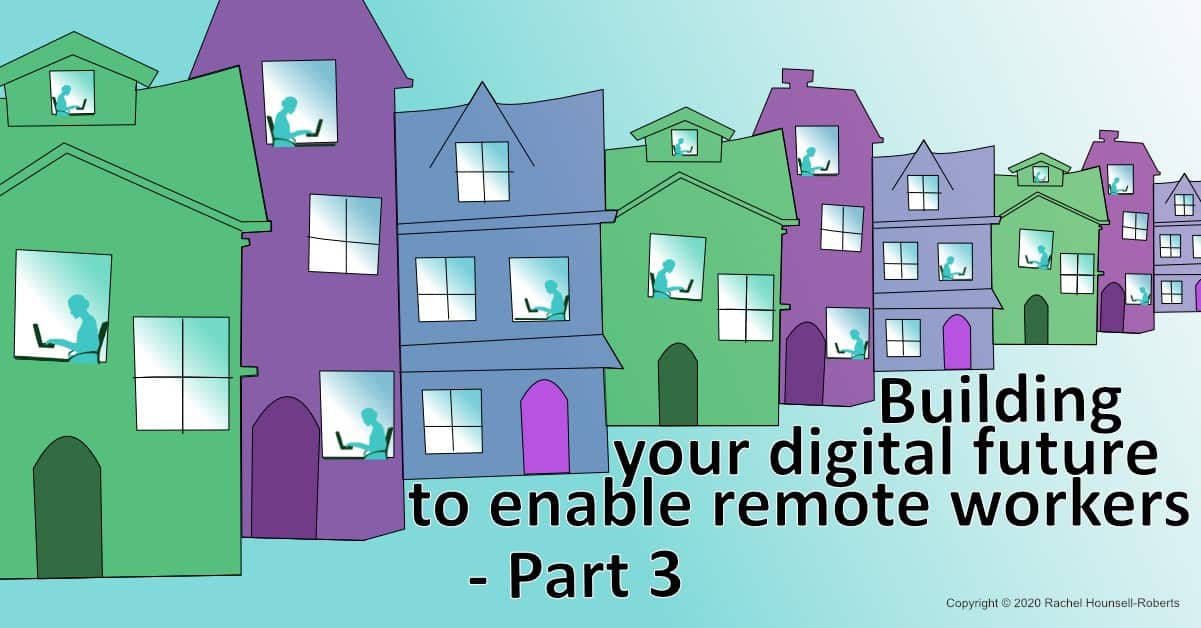Why is adopting technology such a problem? What are the major pitfalls? And perhaps more importantly, how can I avoid them?
Business leaders buy technology for a number of reasons. It could be to solve a problem; the need to scale without breaking the bank; or as an innovation or experiment. There are no silver bullets: Software does what it does, and often adopting technology is more of a challenge than expected.
Our three-part series takes a fresh look at helping remote workers. Part one “Support remote workers with digital systems” outlined three common issues and solutions. In part two, “Adapting to Technology: 4 steps to gain an advantage” we looked at how a business can adapt using technology. Finally, this blog digs into how to make adopting technology a success.
Many struggle with getting the best of out of technology. Our guide, Business Technology: Essential Guide to Best Use, will help you create a robust process to ensure your new tech achieves your aims.
Bad fit solution

You’ve heard the saying, if all you’ve got is a hammer, then everything looks like a nail. I see that a lot with adopting technology: Something designed for one purpose used (or even abused) to solve another problem. It’s the classic kitchen knife as a screwdriver scenario!
I admit that you have to admire the creative problem solving. Sadly, a business can find itself in hot water. Like using a garlic press when the recipe says finely chopped ginger – you know it’s going to end in tears (or a red face at least). For example, pushing that spreadsheet too far or having your customer data in emails is a recipe for disaster. Sometimes it’s more subtle. It might be a system that sort of works, but beneath the surface it’s not a good fit. You might end up with lots of workarounds, or it’s costly to get the information you need. Worst case scenario, it causes customer issues, or you lose all your data!
Lack of engagement

Shelfware is the term used for purchased software that’s not used. Sometimes it happens due to complexity or for economic reasons. Other times it happens because staff struggle to engage with the new solution. They may not see it as a better solution.
No one wants something pushed on them, especially if they think it’s a whim. We all want to know why somethings needed or important. Even so, it can feel uncomfortable to try something new. We have to let go of something we’re good at, and for a time, become beginners again. It takes effort, it can take time, and it can knock our self-confidence.
Lack of a plan

There are a lot of moving parts when adopting technology. You have to have a good solution fit and engagement otherwise, no matter how good your plan, it’s not going to end well. It’s rather like deciding what you’re going to eat late one night only to discover you’re missing most of the key ingredients! As with all plans, it’s about being clear what you’re looking to achieve and figure out the steps to get there. As part of that, you’ll be looking at a strategy and how best to support staff through the transition.
Driving success
Adopting technology can be challenging. People find it’s much easier to get past the hurdles if there’s a clear vision and reason to change. Solutions must be a good fit for the here and now, as well as a few years into the future. There needs to be clarity about what it will do or not do, and how things will need to change. Importantly, people need time and support to adjust to a new way of working.
Finally
Some leaders feel disappointed that they don’t have the right software; others have the right software and struggling with engagement; a few have the right software and great staff engagement and yet feel frustrated that they don’t know how to make it happen. I don’t suppose you see any of these in your business. On the other hand, if that sounds about right, then meet with me for a free 30-minute virtual call and let’s work together to explore the best way forward for you and your business.
Related Articles
If you’d like to explore the ideas in this article further or need help and advice, please contact Rogan at rhounsell@kr5consulting.com – to arrange an informal chat.
If you’ve found this blog interesting or useful, please ‘like’, ‘comment’ or ‘share’ so it can help others too.

